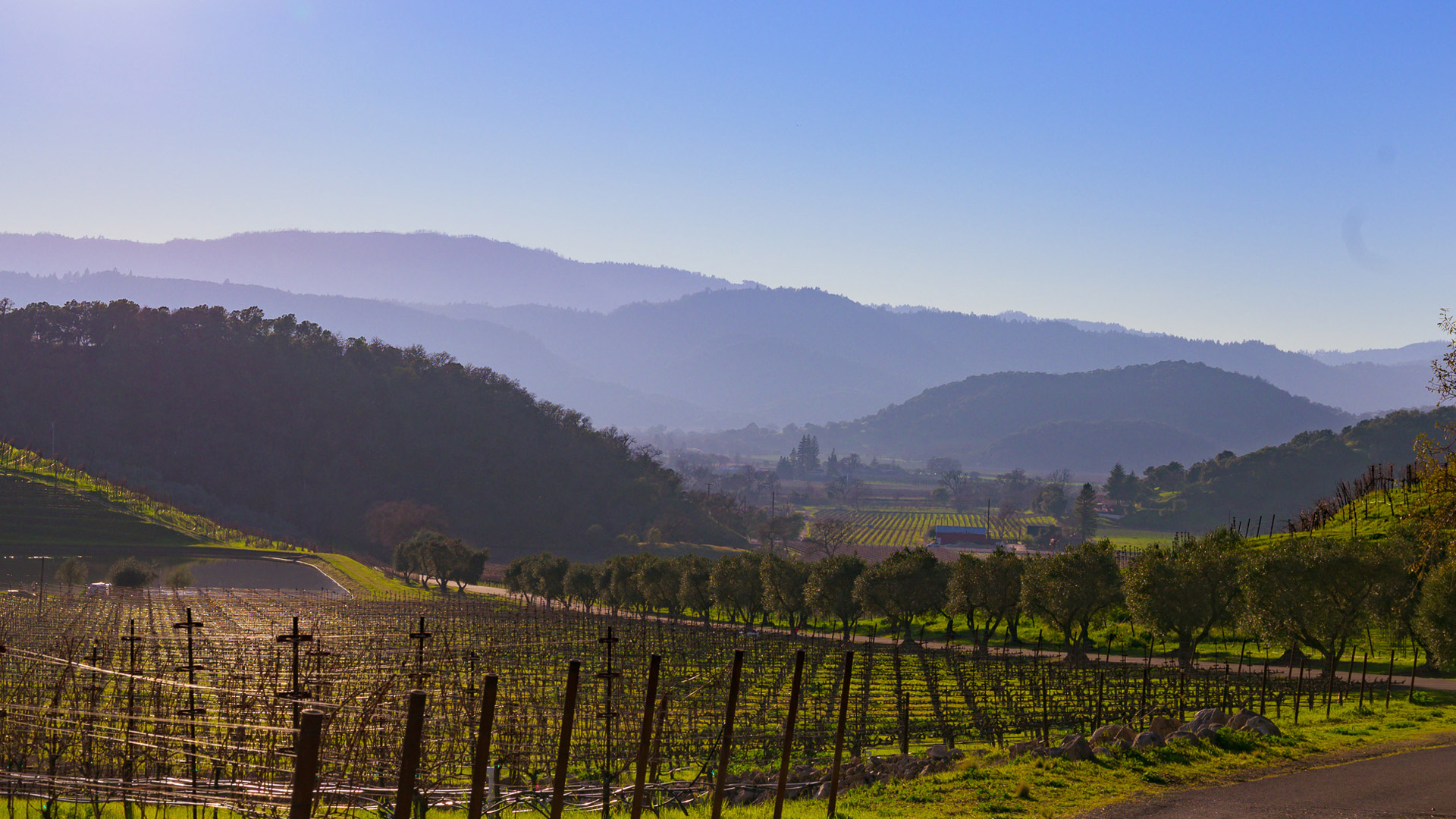Spring Mountain District
Napa Valley's mysterious mountain.
If you strike west into the hills by St. Helena, you'll find yourself in Spring Mountain District. Many of Napa Valley's classic and lavish hillside estates are here with incredible stories of mystery and intrigue.
The wines deliver the same mysterious awe-factor. They are big, distinctive wines but with the polish of something you might find from a valley vineyard.
When you drive through the region, the vineyards and wineries sit hidden away from the road, so you have to make a concentrated effort to see them.
Spring Mountain District wines to know
Certainly, single-varietal Cabernet Sauvignon is an important wine in Spring Mountain District, but perhaps what's more compelling are the Bordeaux-style blends which feature Cabernet blended with Cabernet Franc, Merlot, Petit Verdot, and Malbec.
The red wines deliver rich, pure black fruit flavors, along with a refined earthy minerality – like black pepper, or freshly roasted coffee bean.
And then there are the surprising oddities: an incredible mountain Riesling, a biodynamically grown Syrah, a mountain Pinot Noir, and award-winning single-varietal Merlot.
Lokoya's Spring Mountain vineyards sit tucked away behind trees.
Notable vineyard and wineries in Spring Mountain District
-
Spring Mountain Vineyard – First planted in the late 1800s, the old mansion barely survived the wildfires of 2020. Wines from this site have all indications of age-worthiness.
-
Pride Mountain Vineyard – While they produce a tremendous Cabernet Sauvignon, the Merlot is what draws a crowd.
-
Smith-Madrone – Hiding in the mountains, Smith-Madrone produces one of the more compelling Riesling wines from the Northcoast region.
-
Keenan Winery – Not the lush style found on most of the hill, Keenan produces lithe, tenuous single-varietal wines with minerality.
-
Stony Hill Vineyard – One of Napa's classic wineries that now, under new ownership hopes to continue to produce wines in a more classic, old-world style.
Spring Mountain District Terroir
What's surprising about Spring Mountain are the soils. Not necessarily the soil type, but the depth. Most mountain vineyards have very shallow, gravelly soils. Whereas, there are spots on Spring Mountain with deep soils of loam and volcanics.
The depth allows the vines to maintain a balance between leaf and fruit growth and, with proper pruning, deliver lush fruit flavors and polished, silky tannins.
Additionally, many of Spring Mountain's vineyards sit at elevations above 2,000 feet. With ultraviolet light exposure increased by at least 10% just due to the height, it produces inky black wines.
Spring Mountain District AVA Facts
- Spring Mountain District AVA was established in 1993.
- Spring Mountain soils are an equal mix of sedimentary and volcanic rocky soils.
- Spring Mountain District AVA is 8,600 acres with about 1,000 acres planted.
- San Francisco banker, Tiburcio Parrot, was laughed at in 1893 when he told a newspaper he would grow wine in the area. Two years later his wine won a gold medal at the World’s Fair.























